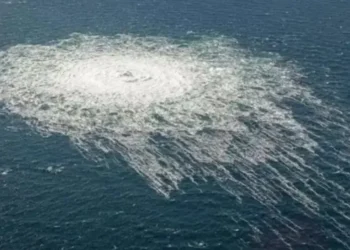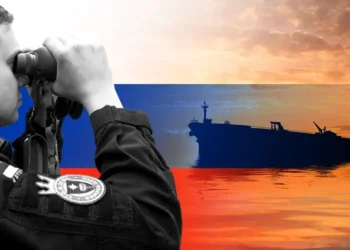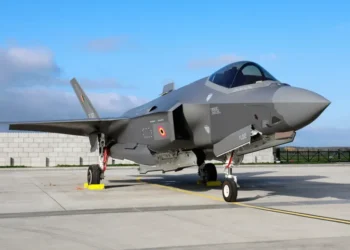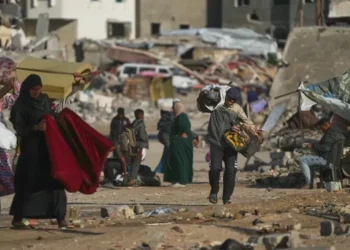Jetliner Skids Off Runway in South Korea, Killing 179 in Fiery Crash
A catastrophic aviation disaster unfolded in South Korea on Sunday when a Jeju Air Boeing 737-800, arriving from Bangkok, skidded off the runway, struck a concrete barrier, and burst into flames. The accident claimed 179 lives, leaving only two survivors in one of the country’s worst air disasters in decades.
Crash Details and Scene of Tragedy
The aircraft attempted to land in Muan, approximately 290 kilometers (180 miles) south of Seoul, when its landing gear reportedly failed to deploy. Shocking footage aired by South Korean media revealed the jet skidding across the runway at high speed, crashing into a barrier, and erupting into a massive fireball. Thick black smoke engulfed the wreckage, leaving only the tail section distinguishable.
Emergency workers managed to rescue two crew members, both conscious and without life-threatening injuries. However, the devastation was total for the remaining passengers and crew, most of whom were South Korean nationals, along with two Thai citizens.
Investigation Underway
Authorities are examining potential causes of the crash. A warning about bird activity near the runway was issued to the pilots shortly before landing, and investigators are exploring the possibility of a bird strike. Both the flight data recorder and cockpit voice recorder have been recovered, but officials estimate the probe could take months to conclude.
Preliminary analysis of video footage suggests potential hydraulic failure. Aviation experts noted that the pilots did not deploy flaps, slats, or manually lower the landing gear, possibly due to time constraints.
Retired airline pilot John Cox observed that the plane appeared under control but was critically damaged when it struck the barrier. “It disintegrated into catastrophe,” he said.
Jeju Air’s Response
In a public apology, Jeju Air President Kim E-bae expressed his deep regret and vowed to cooperate fully with the investigation. He emphasized that regular maintenance checks had revealed no prior mechanical issues with the aircraft.
The airline also pledged to assist victims’ families and manage the aftermath of the tragedy. Boeing, the aircraft’s manufacturer, has offered its support to Jeju Air in addressing the incident.
Survivors and Victims
One of the survivors, receiving treatment for rib and spinal fractures, recounted waking up to find himself rescued. The identities of 88 victims were confirmed within hours of the crash, with family members gathering at Muan Airport, overcome with grief as officials read out the names of the deceased.
Thailand’s Prime Minister Paetongtarn Shinawatra extended condolences to the victims’ families and instructed Thai authorities to provide support.
National Mourning Declared
The South Korean government has designated Muan a special disaster zone and declared a weeklong national mourning period. Deputy Prime Minister Choi Sang-mok, now acting head of state amid South Korea’s ongoing political turmoil, visited the crash site and urged swift identification of the victims.
International leaders also offered condolences. Pope Francis said he joined in prayer for the survivors and victims, while U.S. President Joe Biden offered any necessary assistance.
Aviation Disaster Context
The Muan crash is South Korea’s deadliest aviation incident since the 1997 Korean Airlines disaster in Guam, which killed 228 people. Comparisons have also been drawn to the 2010 Air India Express crash in Mangalore and the 2007 São Paulo tragedy, both of which involved runway overruns.
Globally, the Boeing 737-800 is considered a reliable aircraft, with over 4,500 in service. Experts, however, emphasize the need for further investigation to determine the precise cause of this devastating accident.
A Nation in Grief
As South Korea mourns this tragic loss, the crash underscores the critical importance of safety and preparedness in aviation. The nation and the world stand in solidarity with the victims’ families, ensuring their lives are honored amid this somber chapter in aviation history.
This article was rewritten by JournosNews.com based on verified reporting from trusted sources. The content has been independently reviewed, fact-checked, and edited for accuracy, neutrality, tone, and global readability in accordance with Google News and AdSense standards.
All opinions, quotes, or statements from contributors, experts, or sourced organizations do not necessarily reflect the views of JournosNews.com. JournosNews.com maintains full editorial independence from any external funders, sponsors, or organizations.
Stay informed with JournosNews.com — your trusted source for verified global reporting and in-depth analysis. Follow us on Google News, BlueSky, and X for real-time updates.













